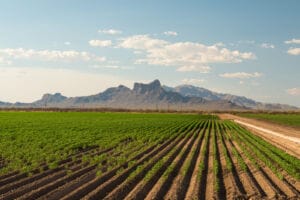The Arizona Mining Association brought together policymakers, tribal leaders and industry members to demonstrate support for long-term operation of the Navajo Generating Station (NGS) at a major Phoenix rally. Leaders emphasized the importance of keeping the plant operating well into the future to protect affordable energy, skilled Navajo and Hopi jobs and economic strength in the state. The Arizona Mining Association rally was held in conjunction with an afternoon listening session to gather opinions about the future of the plant, which was hosted by the Department of the Interior.
NGS is fueled 100% by coal mined at Kayenta Mine, an Arizona energy resource, and provides power to move Central Arizona Project water across the state. The plant helps maintain diversity of the state’s energy supply using coal mined on Navajo and Hopi lands.
A recent third-party study shows that the power plant can continue to be competitive with natural gas and other coal-fueled power plants through 2040, while saving hundreds of millions of dollars for Arizona ratepayers.
The study, presented during an Arizona Corporation Commission meeting, finds that continued operation of NGS is more economically viable than replacement alternatives in the near and long term. It projects a cost of nearly $400 million below the cost of market replacement of energy and capacity from 2020 to 2040.
“NGS delivers affordable energy for Arizona water and power users, creates thousands of direct and indirect jobs, and provides significant benefits for tribal communities,” said Congressman Paul Gosar (AZ-04). “For years, we fought to save the plant from job-killing mandates and nonsensical regulations sought by the Obama Administration. While the future of NGS now resides on the business decisions of private companies, the new Congress and Trump Administration can help by uniting stakeholders and facilitating an environment for economic growth. I am hopeful good people will step up to the plate and find a long-term solution for the plant and local communities.”
“Arizona is at risk of becoming overly reliant on natural gas, when virtually all our natural gas has to be imported,” said Arizona Corporation Commissioner Andy Tobin. “Keeping the plant operating will protect ratepayers from volatile natural gas price swings, protect against supply disruptions and would be far more cost-effective than prematurely retiring the plant.”
Together NGS and the Kayenta Mine create thousands of direct and indirect jobs, and provide 22 percent of the Navajo Nation’s annual general budget and 85 percent of the Hopi Tribe’s general fund budget. Keeping the plant operating well into the future would mean $18 billion in economic benefits for Arizona from the mine and power plant between 2011 and 2044, according to a study by Arizona State University (ASU). For the Navajo, operations would drive nearly $13 billon in gross Navajo Nation product between 2020 and 2044, according to another ASU study.
“The Central Arizona Project relies on the Navajo Generating Station for
80 percent of its power,” said Arizona State Representative Mark Finchem. “Premature plant closure would create economic hardship for the Navajo and Hopi. It also puts at risk the state’s energy diversity and does not address the full cost impacts to CAP and its customers.”
“NGS has been a major contributor to the state’s growth and prosperity over the decades,” said Arizona Mining Association President Kelly Shaw Norton. “It is essential for the state’s leaders to come together to make sure we make smart decisions about the state’s energy future.”
Additional sponsors for the event included Friends of Coal, AMIGOS and the Southern Arizona Business Coalition.



